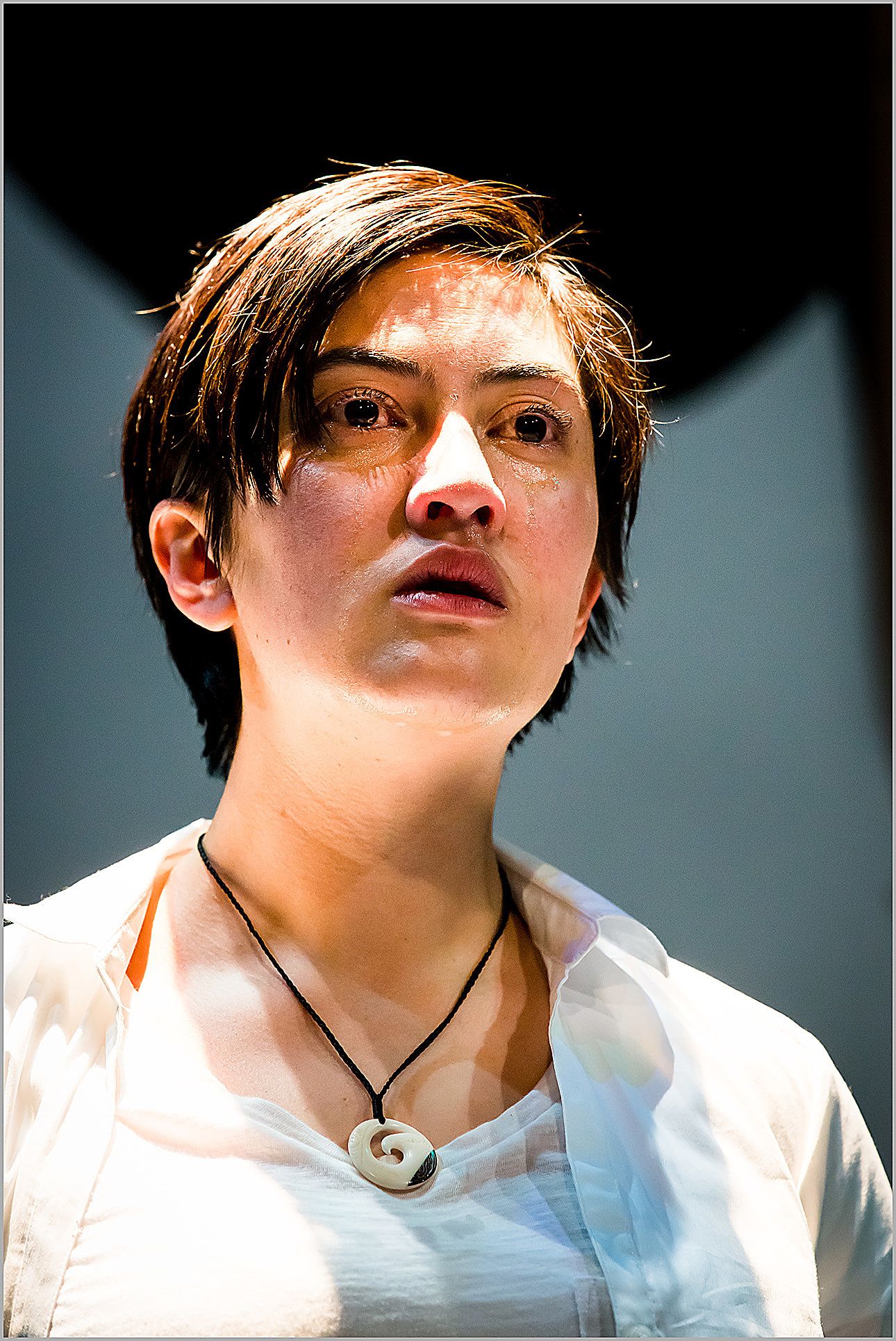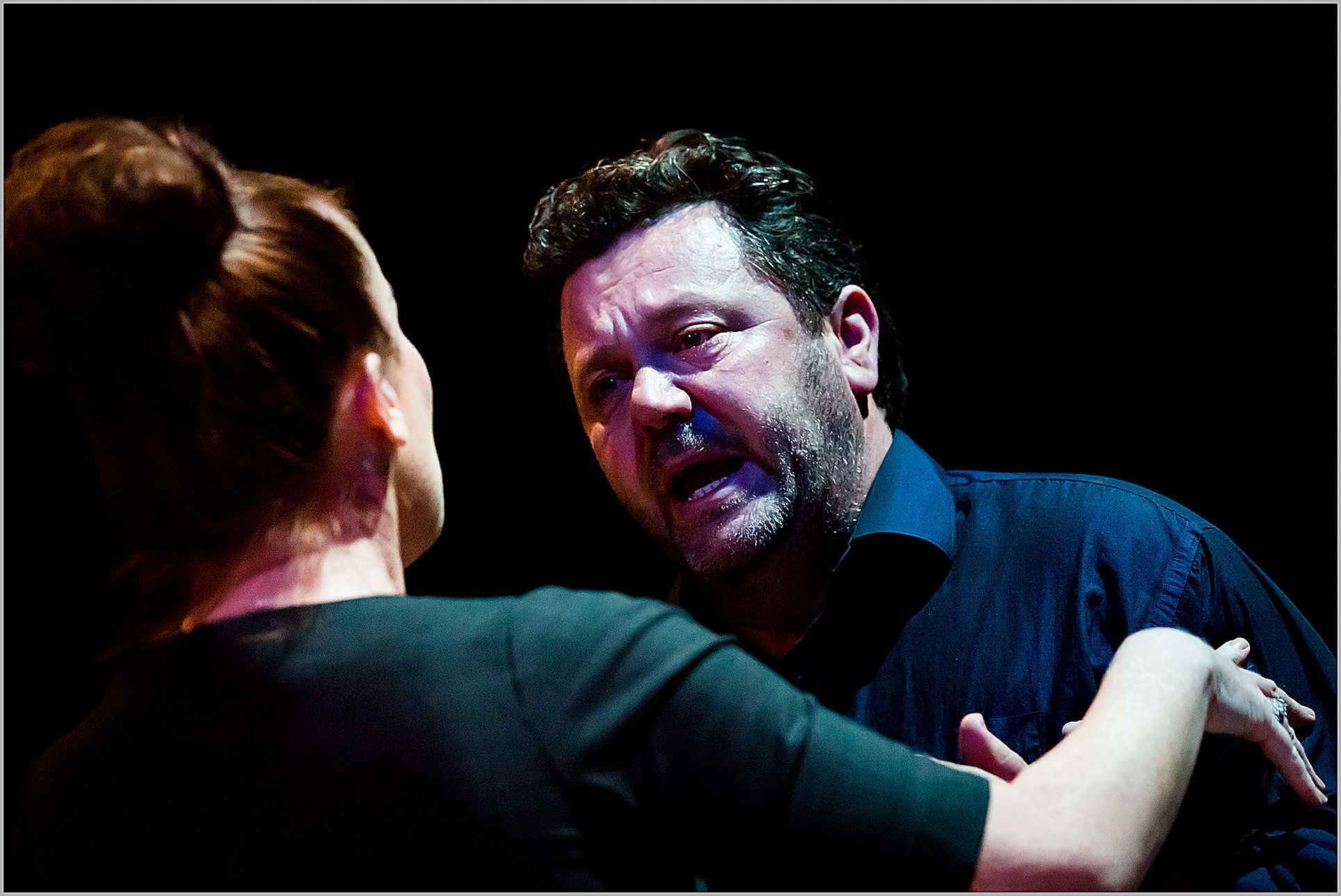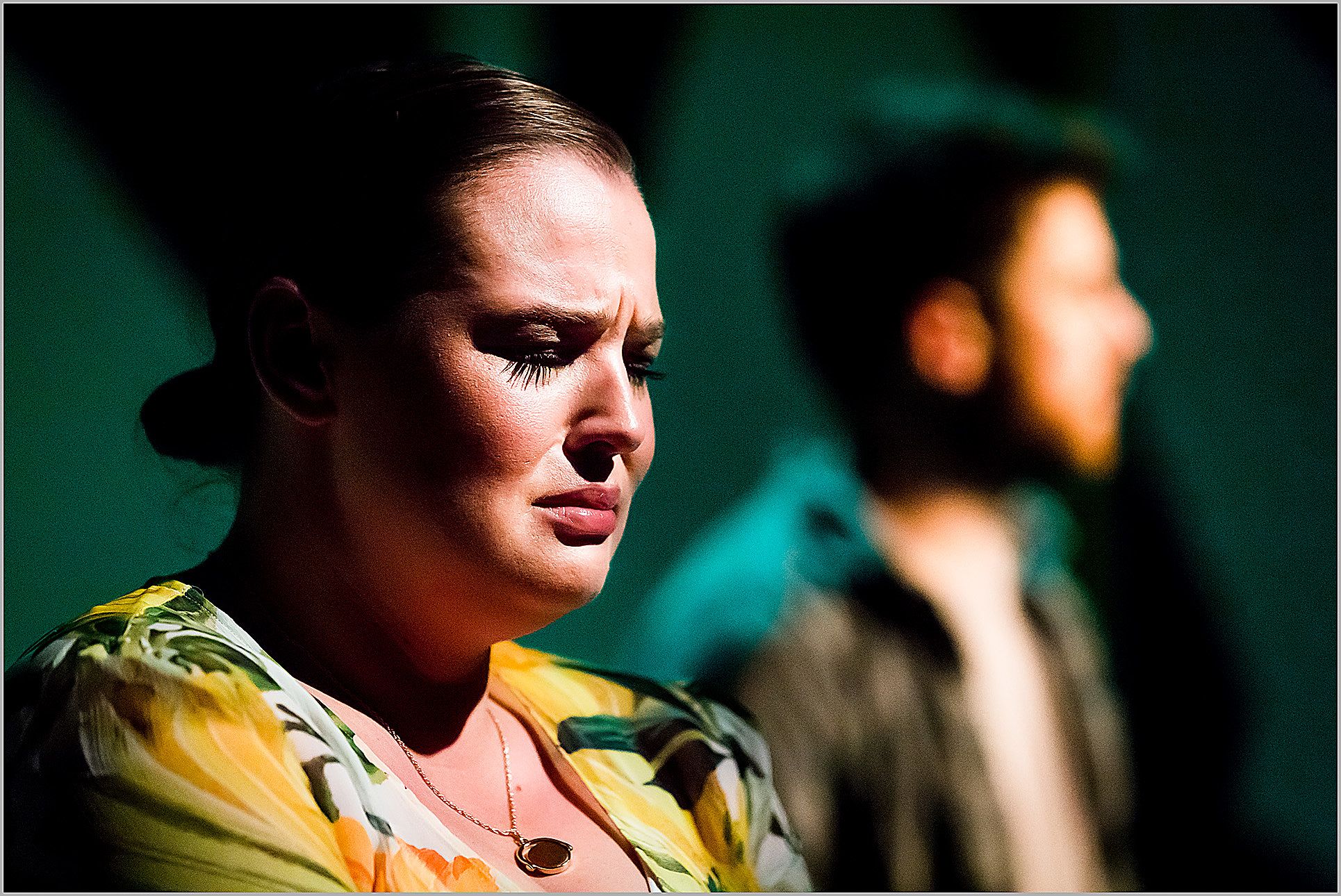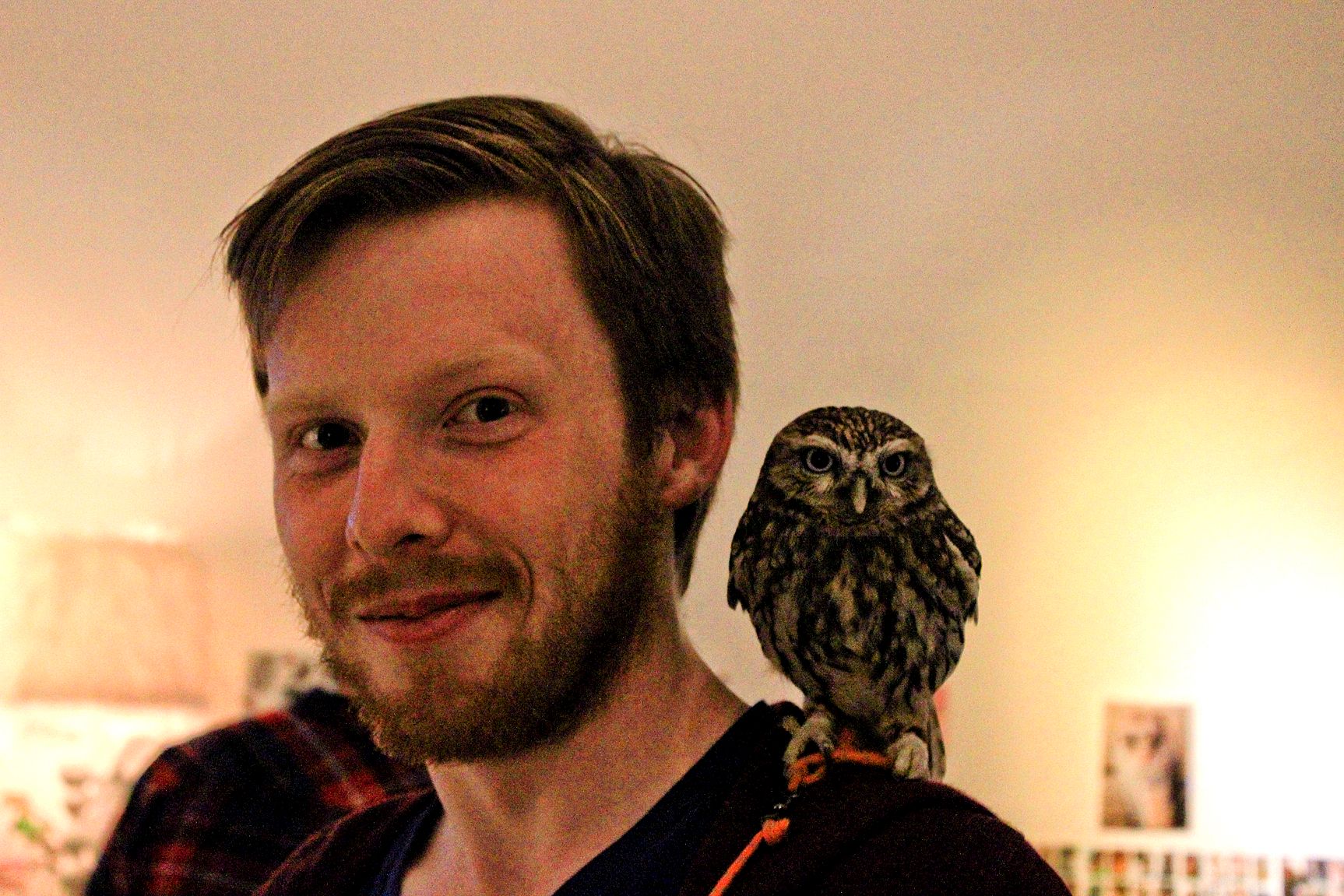Divine Intervention: A Review of Anahera
Adam Goodall reviews Anahera, a 2016 Adam Award finalist that’s hard to discuss without ruining its most remarkable turns, and hard to praise without some key regrets.
Adam Goodall reviews Anahera, a 2016 Adam Award finalist that’s hard to discuss without ruining its most remarkable turns, and hard to praise without some key regrets.
It’s incredibly difficult to talk about Anahera, written by Emma Kinane and directed here by Katie Wolfe, without talking about where it goes. Because of that, this review contains considerable spoilers. If you’re planning on seeing the show and do not want it spoiled, save this for later.
*
Anahera tells a story across two timelines. In the first, social worker Anahera is dispatched to the home of Liz and Peter Hunter, a wealthy Pākehā couple, after their son runs away. She soon suspects that something’s up with this superficially-perfect household. Moved by those suspicions and her sense of duty, she takes a literal stand, refusing to move from a spot in the family lounge until she sees some “change”, some “insight”. The second, a flash-forward some twenty years in the future, runs backward through Liz’s last-ditch attempt to repair her relationship with her now-adult children, Imogen and Henry. We see Anahera’s intervention and its decades-old aftermath, the past and the future calling to each other and responding.
The most striking and illuminating moment of Anahera’s opening night, though, is unwritten and unplanned. Toward the end of the second act Henry and Imogen argue about ‘Armageddon’, the family ‘conference’ that Imogen desperately hopes will close the rift between Liz and Henry. Anahera, twenty years in the past, stands between them, lit by a bright, almost-messianic spot. Trapped in a moment she was generations too late to prevent, her nose starts bleeding.
After the show, I’m told that the nosebleed is real (and Neenah Dekkers-Reihana, who plays Anahera, is an absolute champion for not even flinching at it). But the sheer sensation of that spectacle, crimson dripping onto her white shirt, is still overwhelming. It’s grand and blunt, the kind of operatic picture of suffering and grief that wouldn’t be out of place in a Park Chan-wook film. It tells a whole story about generational trauma and the brutal difficulty of getting people to change, especially abusers, in one image.
It’s also bittersweet because it’s such an isolated moment. Because Anahera is otherwise reluctant to be that theatrical.
Anahera talks about a lot of hot topic issues, loud and with conviction. The polished marble floor and sterile white furniture place us firmly in a world of Wadestown privilege. Peter obliviously sympathises with Anahera about the “ferals” she must meet in her work; Liz muses on how all Māori are “very spiritual” because her clairvoyant doctor said so. They both act superior because their money (sorry, their hard work) has put them on top – when Peter suggests they take Anahera to the police for trespassing, Liz spits back, “What, more justifying our lives to people wearing cheap shoes?” – and far too many people are willing to help them with that illusion. Anahera’s boss at MSD practically prostrates herself before them, apologising for even the suggestion that Liz and Peter might be abusive. The pair show different symptoms of the same deep affluenza.
Anahera moves steadily toward a conclusion that, in all fairness, is aimed perfectly at Circa’s older and wealthier audiences: ‘rich Pākehā abuse their children too, so stop treating it like someone else’s problem’. But then Kinane pivots, revealing that Liz is a high-functioning sociopath who hates children (“they’re parasites”) and doesn’t do a lot to hide it. It’s a brilliantly destabilising revelation, at least initially, specific and lurid and setting off an escalating emotional war between Anahera and the woman she hasn’t trusted since they met. It steers us straight into psychological thriller territory and, like a rip in the ocean, it grabbed me.
This twist also gives all four Hunters something substantial to play with, each one trapped in this emotional mess and looking for a way out. Simon Leary and Susie Berry, playing Henry and Imogen, take the bait and give deeply-felt performances. Berry finds the fragility beneath the good face Imogen puts on everything, and Leary’s doing career-best work. He lingers in the space like a low-hanging stormcloud, buckling under the weight of his past and terrified at the damage he knows he’s passing on to his son. When he explodes, it’s quick, inevitable and immediately regretted, the anger of a victim who’s fully aware of how they’ve been broken and feels like the damage is impossible to fix.
As Liz and Peter, though, Jacqueline Nairn and Neill Rea act like they’re in a different play. Rea’s a cheerful Waitakere Man with a few dollars to his name but he gesticulates like an old Shakespearean actor. He’s jabbing his finger at Anahera or he’s cupping the air as he makes excuses for his behaviour but he’s always doing something with his hands and it doesn’t really gel with his good-old-boy facade. Nairn, meanwhile, is a full-on Faye Dunaway ice queen. She intimidates Anahera with her entire body and talks about “breaking” her children with the stressed, measured tone of someone who’s been on hold with their internet provider for an hour.
[Neenah Dekkers-Reihana's] Anahera is naive but filled with determination; every blink and shrug and clasp of her hands is loaded with doubt and hesitation and the difficult decision to take her protest one step further.
There’s a tension between Nairn and Rea’s high-level theatrics and Leary and Berry’s grounded performances. Anahera, the social worker at the heart of it all, seems designed to resolve that. She’s a selfless, self-righteous detective who suffers for this Pākehā family’s sins, totally unprepared for the difficulty of the task she’s taken on, and Neenah Dekkers-Reihana is immense in the role.
Her Anahera is naive but filled with determination; every blink and shrug and clasp of her hands is loaded with doubt and hesitation and the difficult decision to take her protest one step further. Left alone in the house at the end of the first act, she breaks down but still doesn’t move. Rather than rushing the moment, Wolfe gives Dekkers-Reihana time to let the pain settle and take hold. She crumbles slowly and completely. It’s a spectacular piece of acting and is the perfect cap to a first act in which Anahera can’t seem to make any ground.
But the script is less interested in Anahera than the petri dish of trauma around her. Though she has a backstory of rational beliefs and well-intentioned failure, her motivations are addressed directly and in brief, rather than teased out over the course of the play’s 120 minutes. Even a big reveal in the second act feels tangential to the action and, beyond entrenching her martyrdom, it doesn’t really change or clarify our understanding of who she is and why she’s doing this.
More often than not, then, Anahera is a vehicle for making subtext into text. Her protest and her scattered observations wear the others down, make them see the world differently, and illuminate running themes about class, about forgiveness, about generational abuse, about the state and its bigotry. She barely even figures into the regular flash-forwards, thanked once and otherwise talked about as a mysterious intervening force. She’s a device, someone to make the story happen and tie it together, and it’s not subtle. We’re even told her name translates to ‘Angel’.
All of this – the programmatic characterisation, the divergent performances – means that Anahera is torn between two plays. On the one hand, it’s a trenchant and incredibly relevant drama about trauma as a cycle, about the incredible difficulty facing anyone who tries to break such a cycle. It’s the kind of thing that gets people in the foyer talking about the state of the New Zealand they live in and maintain, and that's absolutely worth the effort.
On the other, it’s a knotty psychological thriller about a social worker going toe to toe with a power couple that won’t back down. The blend’s not an impossible one. I go back to Park Chan-wook, whose Sympathy for Mr Vengeance and Sympathy for Lady Vengeance both manage to swing between those tones with reckless abandon. But there’s nothing about Anahera that suggests it’s going for broke.
There are a few great moments of gallows humour and a few striking stage images (lighting designer Lisa Maule creates some fantastically eerie scenes with yellow sidelights), but it’s too subdued, too coy. It seems to work to a set of rules around what an ‘issues play’ looks like; you can hear the small voice in everyone's head pulling them back to 'realism', at least in a paradigm that defines realism as muted unease. The flash-forwards do a lot of that work, undercutting the sense of dreadful discovery that should be inherent in Anahera's detective work by telling us in advance what she's going to discover. Even Nairn, the show’s campest presence, dials back her performance in those scenes, moulding her work to fit that unease.
You can still communicate big and urgent thoughts about class and race and child welfare and trauma in a play that’s bold and baroque, and you can still do it with depth and clarity. Anahera dips its toes in that water and even looks like it might commit to getting wet, but it never really does. The end result is a well-meaning play with moments of incredible theatricality, but without the subtlety or confidence that it needs to stick the landing. Its underdeveloped titular character is really the tip of that iceberg.
Anahera runs from 9 September to 7 October at Circa Theatre.
Tickets available here.



